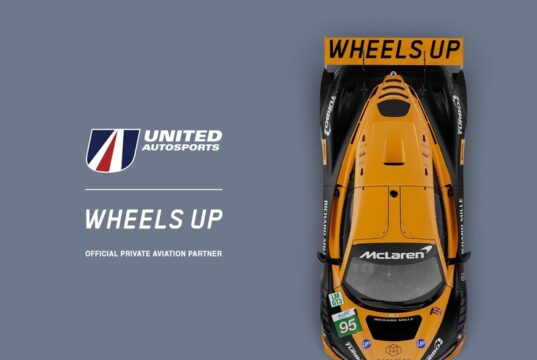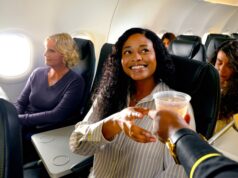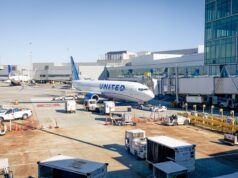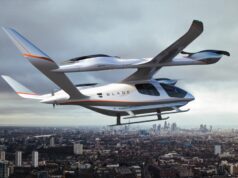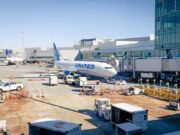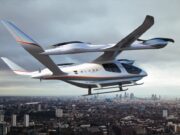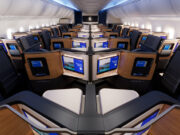
Ben Hamilton is Co-Founder and CEO of IMAGINEAIR, a leading on-demand private air
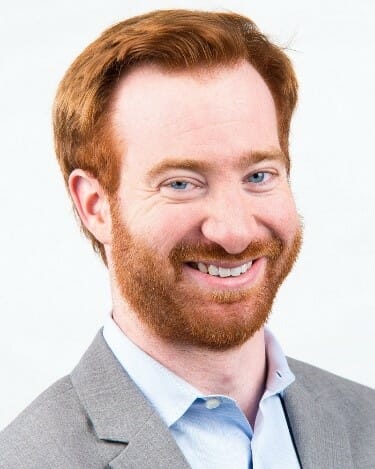
CEO, IMAGINEAIR, Photo provided by IMAGINEAIR
travel service that is making private aviation accessible to the masses. Mr. Hamilton has led IMAGINEAIR through more than 30% growth year over year and over 25,000 flights to date, in his mission to get travelers out of their cars so they can spend more time on what matters at home and away. He is a licensed commercial pilot and Certified Flight Instructor with Multi-Engine, Single-Engine, and Instrument Ratings. He holds a B.S. in Aerospace Engineering from Georgia Tech and an M.B.A from Emory University.
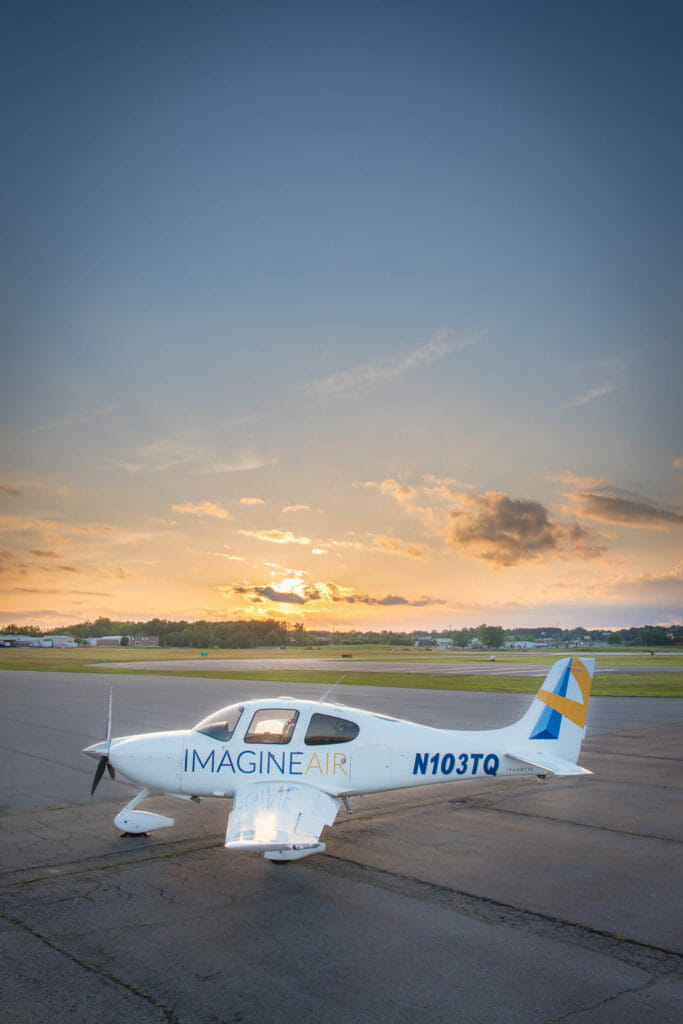
CHANGING THE OUTLOOK ON THE PILOT SHORTAGE
The Current State of the Industry
Several factors have converged to create the pilot shortage that is affecting the industry today, squeezing pilot availability at both ends of the career spectrum. Without a change in business as usual, the statistics indicate an ever-increasing gap between pilot supply and demand. According to Boeing’s Current Market Outlook, 2015-2034, the 20-year North American pilot demand projections show a need for 95,000 pilots. Currently the largest source of pilot supply is Certified Flight Instructors (CFIs), and this segment is projected to supply 64,000 pilots at best, assuming unrealistic, optimum conditions – including all CFIs moving to the airlines at exactly 1,500 hours, the FAA requirement for Part 121 carriers.
The time-intensive and costly path to becoming an airline pilot in the U.S. plays a large role in constraining how many hopefuls actually choose to pursue a career as a pilot. A combination of academic instruction, substantial flight hours and a series of certifications often mean an accumulation of significant expenses, followed by more flight time typically built through a number of jobs before establishing one’s career job.
On the other side of the career spectrum, commercial airline pilots have a mandatory retirement age of 65, creating a wave of current and upcoming pilot exits and increasing demand to fill these vacancies. Nearly 45,000 retirements at U.S. airlines are anticipated over the next 15 years, according to “Initial Pilot Training: Better Management Controls are Needed to Improve FAA Oversight,” published by the U.S. Government Accountability Office.
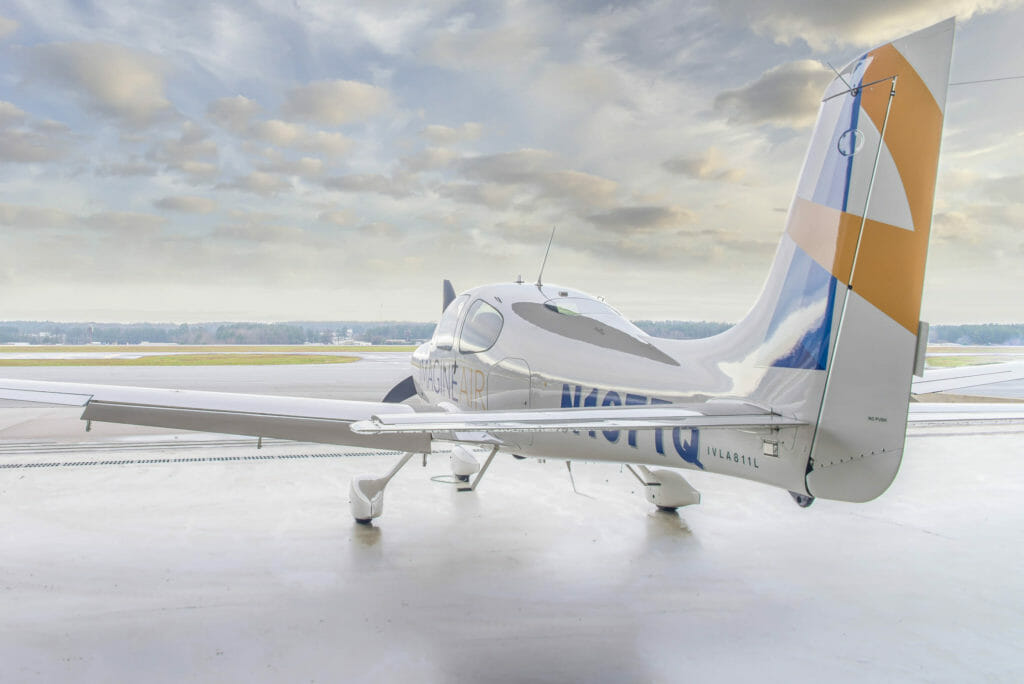
Early Pilot Training
Becoming a rated commercial pilot requires approximately 250 hours of formal training that can be completed in as few as six months. Typically, if self-funded in the U.S., flight school can easily amount to $100,000. Often combined with a four-year degree program, expenses can increase substantially, creating a significant barrier to entry. Prior to August 2013, pilots who had completed this stage of training were eligible to become U.S. airline co-pilots.
Effective August 2013, the FAA mandated having an Airline Transport Pilot (ATP) rating, typically requiring 1,500 hours of flight time, to be an airline second-in-command (SIC). Exceptions to this include military pilots, who can become SIC with 750 hours of flight time, and graduates of qualified bachelor degree aviation programs, who are eligible after 1,000 hours. The pipeline of pilots from those exceptions, however, is still a far cry from projected demand for pilots.
This compares to historic hiring being driven by market supply and demand, at times resulting in pilots being hired with as few as 300 hours to become a first officer or co-pilot. Most countries outside of the U.S. still only mandate 250 hours to fly right seat.
Several foreign airlines fund and arrange this initial training or provide loans to be paid back during employment that follows with the sponsoring airline. The strong aviation infrastructure, temperate weather in many regions, lower costs and easy access to resources make the U.S. a top location choice for this initial training.
The Next Career Stage
Employment opportunities in the U.S. following early pilot training are limited. Pilots need to build flight time to advance their careers. Operators need to fill their pipeline with qualified pilots that are coming through at a much slower pace than prior to August 2013, causing Part 135 and Part 121 pilot recruitment challenges.
Not all pilots are created equally.
As mentioned, flight instructing is a common path to increasing hours and experience. Other channels include employment with Part 135 air taxi and charter operators, Part 91 non-commercial operators, sightseeing and banner towing, and foreign airlines. Varying paths to pilot development lead to differences in pilot competence and capabilities. While flight time is an important factor, it is not the sole variable in determining competence or readiness to fly passengers. Quality of training and in-flight experience are key. While FAA requirements are much more stringent than any other nation’s requirements, operators and businesses that have proven training programs and safety records rise to the top in creating superior pilots.
Partnerships: The Path to Filling Demand for Pilots
Given the bottlenecks and variances in pilot development, we need to utilize high quality resources efficiently. This means creating partnerships to make the flight instructor path more efficient, something historically lacking in the industry. Deep partnerships between employers at various stages of the pilot pipeline can ensure a robust supply of high quality pilots, at reasonable overall cost.
Specifically, strategic partnerships that effectively connect the dots between commercial training schools/flight instructors and commercial airlines offer an innovative solution to the pilot shortage. Pilots just out of initial commercial training provide a distinct advantage as well: They have just gone through a very intensive program of potentially customized training in smaller aircraft, providing a fresher, highly pertinent skill set.
Given that not all pilots are created equally, the bridge that is advancing the next generation through the pipeline should entail paid employment with high quality operators giving top-tier training. IMAGINEAIR, a Part 135 private, on-demand air travel service that has flown over 25,000 flight legs to date, has built an exclusive partnership agreement with a highly professional flight school and a commercial airline. This will bring a pipeline of vetted, certificated pilots who have undergone high-quality instruction and 1,200 hours of flight time, including substantial training tailored to its Part 135 operations, to IMAGINEAIR. IMAGINEAIR’s training goes far beyond FAA regulatory requirements, putting significant emphasis on in-flight training combined with simulator training, whereas the airlines typically rely exclusively on simulator training and only one supervised check ride with passengers before flying passengers as SIC.
IMAGINEAIR training includes mentorship from veteran pilots with decades of experience and additional training modules specific to the Cirrus aircraft. Once pilots that have come through this partnership program have completed 1500 hours, they will join the partnered commercial airline.
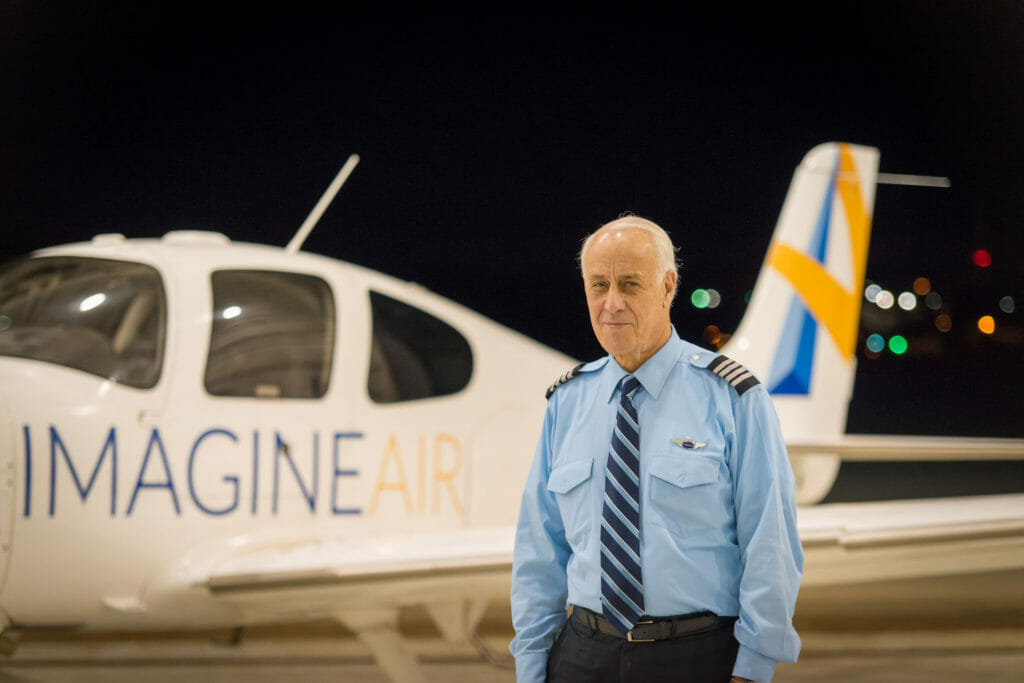
Moving out the Bookend in the Pilot Experience Spectrum
Hiring retired airline pilots and former military personnel can help alleviate the pilot shortage. Mandatory retirement from Part 121 carriers at age 65 prevents them from flying for commercial airlines, and retirement from the military typically occurs at a younger age. Often, pilots retire and have no problem maintaining a current and valid first class medical certificate. They remain completely fit to fly, and can bring exceptional experience to Part 135 operators to help satisfy pilot demand. This also creates opportunities for mentorship, accelerating the learning of the next generation of professional pilots.
Some carriers, like IMAGINEAIR, actively recruit retired airline and military pilots, as well as offering not only full-time but also flex-time options that give flexibility to choose one’s own schedule. This has proven particularly attractive for former commercial pilots who have thousands of flight hours and still want to fly for the love of it.
According to Hart Langer, former Senior Vice President of Flight Operations for United Airlines and Former Chief Pilot for Pan Am, “Flying for IMAGINEAIR is even more enjoyable than flying for Pan Am or United (which I did for many years)! We use advanced avionics that surpass the technology of aircraft used by most commercial airlines. I’m able to directly interact with and get to know our customers, and I have the flexibility to spend most nights at home.”
What constitutes compelling employment benefits for pilots differs at all phases of the pilot’s career. Effective partnerships will capitalize on these to attract talent at appropriate stages.
Conclusions
For carriers to attract talented pilots and grow, dynamics at various stages of the pilot career spectrum need to be understood and actively managed. Those that recognize how to best meet lifestyle priorities at each stage of the pilot career and that create effective partnerships will be much better equipped to ensure efficient, competent pilot supply to meet current and future demand.
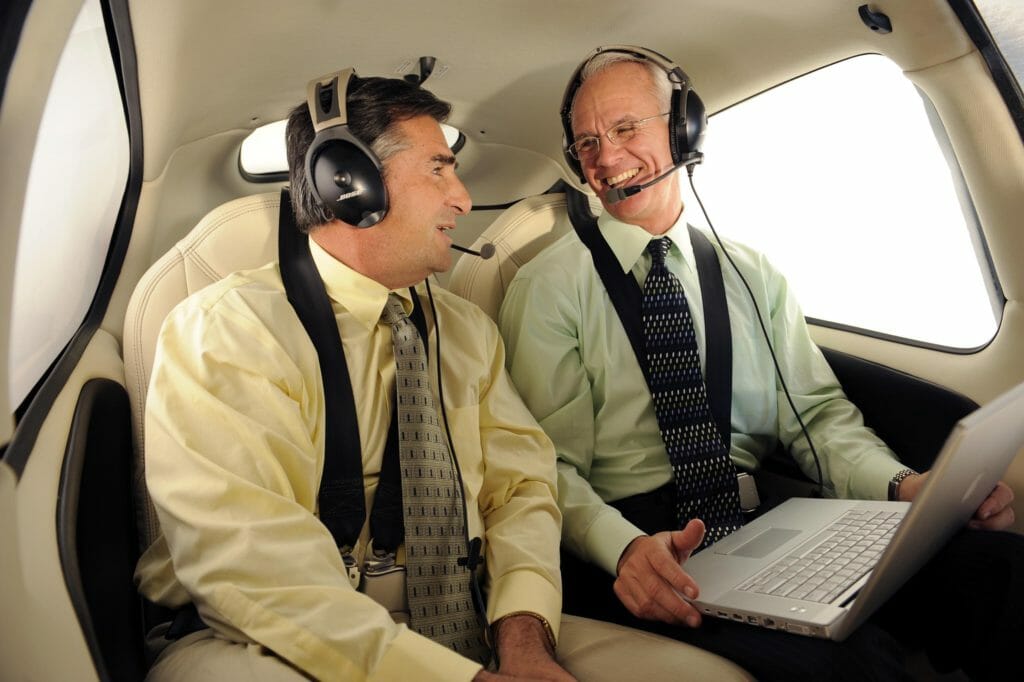
Photo provided by IMAGINEAIR
Interview with Benjamin Hamilton, CEO ImagineAir
Pre Interview:
Craig: How do you select applicants to be brought in for an interview?
Ben: We initially select applicants for IMAGINEAIR based on whether they meet our aviation experience requirements. Retired airline and military pilots tend to make great additions to the IMAGINEAIR team. However, we also consider applicants with corporate, regional airline or flight instructor backgrounds. The interview process is important. We’re looking for strong aeronautical judgment and decision-making skills, and how the pilot applicants fit into the culture of IMAGINEAIR. We’re looking for pilots that have a commitment to safety and accuracy, and those that live our core values.
C: Can you explain the point system associated with the online application process and what types of things count for points?
B: We do assign values to candidates’ experience in order to rank and prioritize applications and schedule an interview.
Once a candidate receives an invitation to interview, we look at two areas:
- How will they perform on the job? This is based on an assessment of their judgment, aeronautical knowledge and commitment to safety.
- Culture fit. Does the candidate meet our core values? Candidates that demonstrate a high degree of candor and resourcefulness during the interview, along with a history of reliability, dedication, and professional ambition are more likely to receive a job offer. These values are particularly crucial in a single pilot operation. Strong interpersonal skills are also important, but never at the expense of competence.
C: What can an applicant do to increase their chances of being called for an interview?
B:
Providing accurate and complete information on the pilot application, along with strong references or letters of recommendation. Additionally, the initial interaction with our staff counts. Reliability is a core value at IMAGINEAIR and we find a strong correlation between those interactions and how a candidate will perform.
C: How critical is it to attend a job fair to get an interview?
B: Attending a job fair isn’t necessary. We’re happy to engage directly with pilot applicants. IMAGINEAIR values convenience in every aspect of our work, and maximizing efficiency from how their paperwork is processed to how we conduct our flows and checklists in the aircraft.
C: What is the best way to prepare for an interview with your company?
B: If there was a single item that would benefit the applicant the most in terms of preparation, it’s reviewing aeronautical knowledge as it relates to the type of flying we do at IMAGINEAIR. We’re often surprised to find applicants, especially flight instructors operating in a similar environment, that have a difficult time answering questions about Airspace, IFR & ATC procedures.
Interview:
C: Do you recommend that applicants get to your headquarters city the day before and get a hotel room for the night?
B: This is the applicant’s decision. A late show to the interview is almost always an immediate disqualification. We take our core value of Reliability to heart for everyone that joins our team.
C: Can you walk me through a typical day of interviews?
B: The interview is usually conducted by our Chief Pilot and one other company representative. We first introduce IMAGINEAIR and talk about our mission, which is making private air travel convenient and accessible to a much broader population, helping people connect face to face and spend time on what matters.
The first portion of the interview is to get to know them personally to assess cultural fit. These questions may be conducted by anyone in the company.
We try to learn as much about the applicant as possible. We want to know about their background and experience, and how those have shaped their values. We want to know what mistakes they’ve made and lessons they’ve learned while in a safe, open and confidential environment. We place value on candidates that are genuine about lessons they’ve learned.
We also like to ask about how they’ve worked with former employers. How do they see their previous teams, and how was their work viewed by their former employers?Scenario-based questions help us assess the applicant’s judgment and thought process. There may not be a single correct answer to any of these questions, but rather we’re looking to see how they process information. This is usually conducted by the Chief Pilot, a company instructor, or check airman.
Finally, we give a very brief (and painless) written assessment of aviation knowledge fundamentals. Candidates that are accepted will spend time in basic indoctrination training to ensure they have the necessary knowledge, however, we ensure that candidates have a strong foundation.
C: Can you give me some examples of the TMAAT questions that you like to ask?
B: “Tell me about a time where you made a mistake in the cockpit.”
“Tell me about a time that you exercised less than optimal judgment.”
We value candidates that answer these questions honestly and openly. A pilot that claims to have always exercised perfect judgment is often not telling the whole story.
IMAGINEAIR promotes a culture of admitting mistakes. No human is perfect. In fact, for any self-reported error, we go to bat for our pilots as long as they’re open and honest. Chances are, if you made that error, somebody else has or somebody else will. This improves the safety of the entire system. Additionally, we want to help our employees learn and develop, and how candidates respond to questions like these also indicates their willingness to learn, and to teach. Our veteran pilots, including those with decades of previous experience working for the airlines, act as mentors for newer pilots. And all pilots go through twice yearly, specialized training that goes well beyond FAA requirements.
C: If the TMAAT question being asked does not apply to that applicant can that question be skipped?
B: We ask TMAAT questions that are virtual certainties with any pilot. For that reason, we do not skip these questions. A pilot that claims to never have made a mistake is a “red flag” and we want pilots to openly bring their mistakes to the company’s attention so that we can continually improve the safety and efficiency of our operation.
C:
What are some of the biggest mistakes that applicants make during the interview process?
B: IMAGINEAIR is forgiving of mistakes as they are necessary to learning and improving. Pilots that withhold known information, such as an unsatisfactory checkride, are disqualified from the interview. We don’t see this often. Genuine is a core value of IMAGINEAIR.
We often uncover some Airspace or IFR and procedural knowledge issues, but these can be solved with some basic preparation before the interview, which may be as simple as a brush-up. This will also make the basic indoctrination training much easier for the applicant.
Written test:
C: Is there a written or computer test?
B: We give a very brief (and painless) written assessment of aviation knowledge fundamentals. This takes less than 30 minutes.
C: What can you recommend applicants study for that test? At what point is this test taken?
B: A review of Airspace, ATC, and IFR procedures is helpful. The test is usually taken towards the end of the interview.
C: What recommendations do you have for applicants to prepare themselves for your personality test?
B: IMAGINEAIR uses techniques from Topgrading to evaluate candidates rather than a specific personality test.
Simulator Evaluation:
C: Do you have a simulator ride?
B: We do not include this in the interview process. However, we do include a procedures trainer in our program, and as additional screening prior to the candidate starting, training in the aircraft. We subscribe to the philosophy that the candidate should be given procedures training prior to assessment in a particular aircraft. If this is done in the interview, the results are skewed towards those that have prior Cirrus experience, which is not a prerequisite of IMAGINEAIR.
Post Interview:
C: Do you tell applicants they are hired in person that day?
B: This depends upon the timing, the number of pilots in class, and the number of pilots needed. Advanced offers are conditional upon background checks and discussions with references, however we try to make the process as quick as possible.
C: If not, how long do applicants have to wait to know if they are hired?
B: If we do not accept an applicant during the same day as the interview, we give them a timeframe immediately after the interview.
C: How soon can an applicant expect a class date after being hired?
B: In most cases, we can provide a class date upon notification of acceptance, which will typically start within 2 to 3 weeks.
General:
C: How many pilots does your airline expect to hire this year?
B: Approximately 20-30, with plans to hire more than 50 in 2017 as we greatly expand the size of the fleet.
C: Can you explain the ATP-CQP class that your company offers?
B: This is not required for IMAGINEAIR’s operation.
C: Do you have a hiring bonus? Is there any specific criterion to qualify for the bonus?
B: IMAGINEAIR doesn’t have a signing bonus, however, IMAGINEAIR’s specific pilot program provides additional compensation opportunities depending on the number of days flown, within different parameters for full-time vs. flex-time pilots.
C: Does IMAGINEAIR have a career path program?
B: IMAGINEAIR is in the process of working with a large training provider for a formal program. However, IMAGINEAIR is currently targeting airline retirees, which make ideal pilots for our operation. This has also proven to be a great fit for retirees that wish to keep doing what they love – fly. There are expected to be over 40,000 retirees in the next 15 years.












